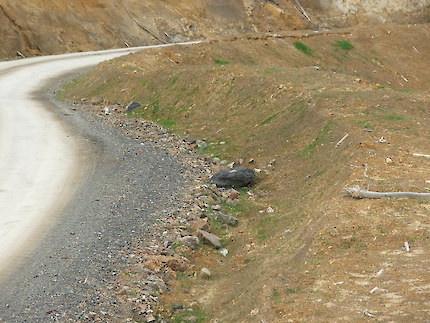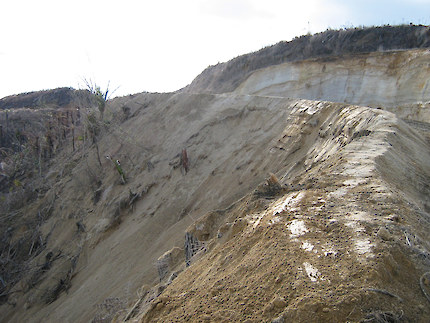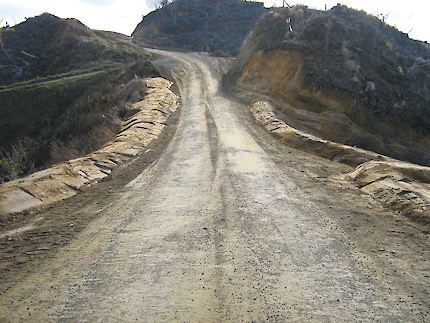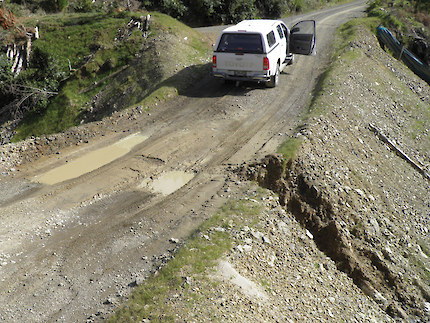Berms are small banks on the outside edge of roads and landings. They direct stormwater away from erosion-prone fills and slip faces to more stable ground. Water then goes to cut-outs, and possibly flumes and sediment traps.

- The berm was constructed at the same time as the road
- The berm has protected the fill
- Grass helps stabilise the berm
- Berms don’t need to be this wide

- The berm is already starting to collapse because it has overloaded the fill
- Berms should not be used to dispose of extra fill, because they get too big
- The berm is not keyed into compacted fill
- The fill is not stable

- Berms protect the large fill
- The road is shaped so runoff is directed away from the fill via berms to flumed cut-outs
- The berm has been compacted and keyed into the fill

- Ponding and scour will likely cause road failure
- Water should have been cut out before the fill, and not allowed to pool in the middle and scour out and saturate the fill
- The low point of the road should not be in the middle of the crossing. If unavoidable, use a through-berm flumed culvert to remove water